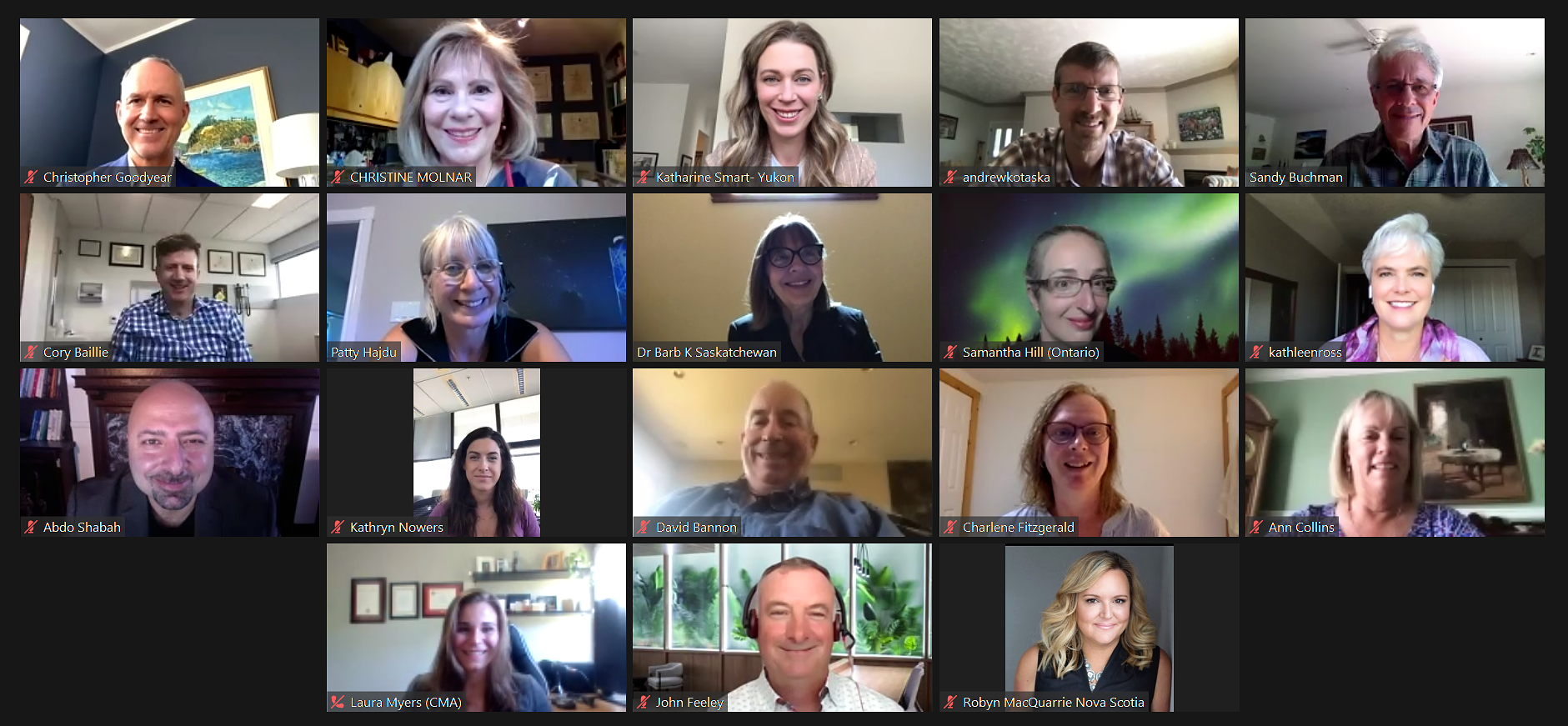
Medical leaders from Canada’s provincial and territorial medical associations met with federal Health Minister Patty Hajdu to explain how COVID-19 has impacted health care in their regions, and the priority issues ahead.
It’s the first time during this pandemic that provincial/territorial medical leaders, together with CMA, have met jointly with the health minister; now more than ever, this is an important milestone in light of the national coordination needed to manage the virus.
“While the health care system may have boundaries, this virus does not, and it was important to come together to look at the collective issues the medical community is facing.” – Dr. Sandy Buchman, CMA president
One of the most immediate issues raised was public health’s capacity to keep pace with contact tracing, and to ramp up testing capacity, particularly as the country heads into flu season. A reliable, transparent distribution model for personal protective equipment (PPE) was also raised as an ongoing concern, for physicians and all health care workers.
On a broader level, the medical leaders shared details about the impact of the pandemic on community care. Before COVID-19, there were about 5 million people across Canada with no family doctor. During the pandemic, most practices shut down or were forced to severely limit services. This loss of capacity has set these practices back; they’re now dealing with a backlog of patient care needs, on top of a loss of revenue, and are struggling to recover.
The group also addressed the backlog in surgeries and specialist services, and the impact on patient care. Pre-pandemic wait lists have grown by months, and there was an emphasis on the need to prevent a “second wave” so that much-needed treatments can go ahead as planned.
“The CMA plays an important role in supporting doctors on the frontlines, and during COVID-19 especially, they've been supporting health care workers across the country. I was happy to speak with them as we continue to work together to ensure medical professionals have the federal support they need to provide excellent care across Canada.” – Patty Hajdu, federal Health Minister
Virtual care was put forward as one way to improve access to care, not as a replacement to in-person care, but as a complement. The group also shared what’s required to make virtual care work in Canada: equitable access to broadband service in rural, remote, Northern and Indigenous communities, and a national licensure system that would remove barriers to patient care across jurisdictions.
CMA Quebec representative Dr. Abdo Shabah, who helped provide care in a Quebec long-term care facility at the beginning of the pandemic, shared the failings he observed: everything from a lack of staff, to a failure to test and trace, to limited space to properly isolate infected individuals.
“Despite all the resources that were made available (at the outset of the pandemic), the system was slow to react when it came to seniors’ care needs,” said Dr. Shabah. “We need to ensure we learn from the first wave and are working on the immediate needs we may face in a second wave.”
Throughout the meeting, the group underscored the need for pan-Canadian solutions, and the importance of close collaboration between the health care community and governments at all levels.
“I hope this meeting today is the first of many conversations,” said Dr. Buchman. “A strong working relationship with government, as a collective, is the foundation of effectively addressing the challenges health care is facing.”
